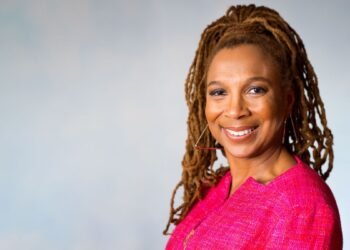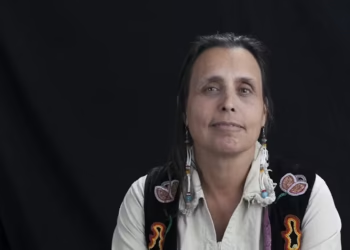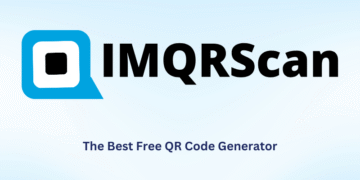What if ordinary women could stop a brutal civil war without firing a single shot?
This powerful question became reality through the extraordinary work of Leymah Gbowee. Born in Central Liberia in 1972, she grew up during turbulent times that would shape her destiny.
Her leadership transformed despair into action. She mobilized women across Liberia to demand peace through nonviolent protest. This movement became known as Women of Liberia Mass Action for Peace.
Their courageous efforts helped end Liberia’s devastating civil war in 2003. The world took notice when Leymah Gbowee received the Nobel Peace Prize in 2011.
Her journey from social worker to global icon shows how determined individuals can create lasting change. She continues to inspire new generations through her foundation and writings.
Key Takeaways
- Leymah Gbowee led a women’s peace movement that helped end Liberia’s civil war
- She received the Nobel Peace Prize in 2011 for her nonviolent activism
- Her work demonstrates the power of women organizing for peace
- She founded the Gbowee Peace Foundation Africa to support education
- Her memoir “Mighty Be Our Powers” shares her inspiring journey
- She continues to advocate for women’s rights and conflict resolution globally
Introduction to Leymah Gbowee
Many people know about famous leaders who changed history. But few understand how ordinary people become extraordinary forces for good.
Who is Leymah Gbowee?
This remarkable peace activist represents multiple roles in her mission for change. She works as a trained social worker and dedicated women rights advocate.
Her identity combines professional skills with grassroots activism. This unique blend made her particularly effective during Liberia’s crisis.
Significance in Global Peace Movements
The Nobel laureate transformed how the world views conflict resolution. She demonstrated that interfaith collaboration could achieve what weapons could not.
Her movement became a blueprint for nonviolent protest worldwide. It showed how women could secure peace security through unity and determination.
International organizations now recognize her methods. The United Nations and other groups study her approaches to conflict resolution.
Her 2011 Nobel Peace Prize recognition highlighted women’s safety in war zones. This award brought global attention to previously overlooked peacebuilders.
Today, she continues influencing global policies through speaking and writing. Her work connects to broader movements for equality and justice.
Early Life and Formative Years
The seeds of extraordinary courage often grow in the most ordinary soil of childhood dreams. Her early years in Central Liberia shaped the resilience that would later define her peace work.
Childhood in Central Liberia
Born in 1972, she enjoyed a typical childhood in her homeland. Her family provided a stable foundation during her formative years.
She dreamed of helping others from an early age. These aspirations would later guide her path toward social work.
Impact of First Liberian Civil War
Everything changed in 1989 when the First Liberian Civil War erupted. The seventeen-year-old’s education and family life shattered overnight.
The conflict forced her family to flee their home. They experienced displacement and refugee conditions that tested their survival.
This period exposed her to the brutal realities of armed conflict. The violence affected countless women and families across Liberia.
Becoming a Young Mother During Conflict
Amid the chaos, she became a young mother facing incredible challenges. Caring for children during warfare required extraordinary strength.
She endured personal trauma including abuse and near-starvation. These experiences deepened her understanding of war’s impact on women.
Her survival included seeking refuge in Ghana before returning home. These struggles forged the resilience that would fuel her future activism.
The transition from victim to advocate began in these difficult years. Her personal suffering became the foundation for her peacebuilding work.
These formative experiences created a powerful activist committed to change. They shaped her unique understanding of trauma and recovery.
Education and Professional Development
Academic training provided the tools to channel grassroots activism into structured peacebuilding. This educational journey transformed raw passion into professional expertise.
The activist pursued multiple learning opportunities to enhance her peace work. Each program built upon previous experiences in meaningful ways.
Social Work Training with UNICEF
Initial professional development came through UNICEF’s social work program. This training focused on counseling war-traumatized individuals.
She learned techniques to help people heal from severe psychological wounds. This experience deepened her empathy and understanding of trauma.
The skills proved immediately valuable in post-war Liberia. They enabled effective work with former child soldiers and abuse survivors.
Associate Degree at Mother Patern College
In 2001, she earned an Associate of Arts degree in social work. Mother Patern College of Health Sciences provided this foundation.
The Monrovia-based program offered formal social work education. It combined theoretical knowledge with practical applications.
This degree equipped her to address Liberia’s complex social problems. It particularly helped in designing trauma recovery programs.
Master’s in Conflict Transformation at Eastern Mennonite University
The educational journey reached its peak with graduate studies. In 2007, she completed a Master of Arts in Conflict Transformation.
This program at Eastern Mennonite University enhanced her peacebuilding skills significantly. It exposed her to advanced theories and practices.
The university’s approach emphasized practical conflict resolution methods. She studied under leading peace studies theorists and practitioners.
This master’s degree shaped her philosophy of nonviolent peacebuilding. It particularly influenced her approach to women’s leadership in conflict zones.
Additional certifications from UN institutes complemented this education. These included specialized training in conflict prevention strategies.
The formal training proved crucial for effective peace work. It empowered the activist with professional credentials to match her experience.
Trauma Healing and Early Activism
Rehabilitating former combatants became her unexpected calling. This period marked a crucial transition from survivor to change agent.
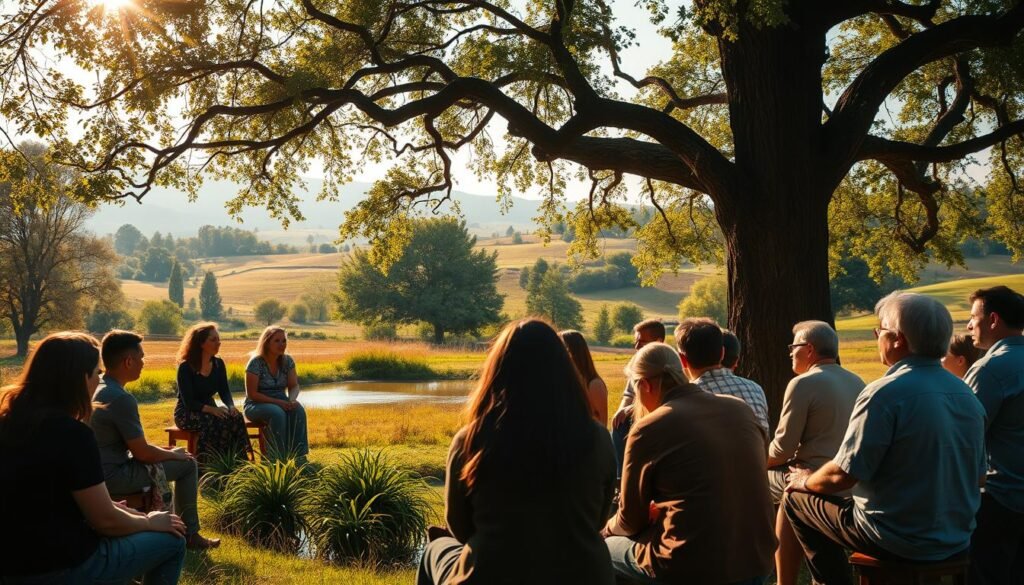
Work with Ex-Child Soldiers
The peace activist confronted war’s brutal legacy through direct action. She counseled former child soldiers at the Lutheran Church’s Trauma Healing Program.
Her social work training proved vital for this difficult work. She helped young fighters process their traumatic experiences.
Many children had been forced into violence against their will. The activist provided tools for emotional recovery and reintegration.
Lutheran Church’s Trauma Healing Program
THRP in Monrovia became her training ground for peacebuilding. She initially volunteered before joining as a staff member.
The program addressed psychological wounds from Liberia’s civil war. It combined professional counseling with community reconciliation methods.
Reverend Bartholomew Bioh Colley mentored her during this period. His guidance shaped her understanding of faith-based activism.
Developing a Peacebuilding Philosophy
Working with trauma survivors transformed her approach to conflict. She saw how war damaged entire communities psychologically.
The activist studied Martin Luther King Jr. and Gandhi’s methods. Their nonviolent strategies inspired her growing philosophy.
Mennonite theologians influenced her conflict resolution ideas. She blended their teachings with practical trauma healing experience.
This period revealed women’s unique power as peace agents. Mothers could drive societal change through organized action.
These insights would later fuel massive women-led movements. The skills gained here prepared her for larger activism.
Founding Women in Peacebuilding Network (WIPNET)
True change requires organization and structure to transform passion into lasting impact. The peace activist recognized that individual efforts needed collective power to create real transformation.
This realization led to creating a groundbreaking women peacebuilding network across West Africa. It became the backbone for coordinated action among women peacebuilders.
Collaboration with Thelma Ekiyor
The Nigerian lawyer Thelma Ekiyor became a crucial partner in this effort. Together, they envisioned a formal network peacebuilding organization for women.
Their collaboration blended Liberian and Nigerian perspectives on conflict resolution. This partnership created a stronger regional approach to women peace efforts.
Ekiyor’s legal background complemented the activist’s social work experience. Their combined skills made the network both practical and strategic.
Establishing WIPNET in West Africa
The Women in Peacebuilding Network launched under WANEP’s umbrella in 2001. This placement provided institutional support while maintaining focus on women’s roles.
WIPNET’s first meeting in Accra, Ghana brought together women from multiple nations. They shared experiences and strategies for addressing regional conflicts.
The network developed training manuals and practical exercises. These tools educated women on conflict resolution techniques.
As Liberia coordinator, Leymah Gbowee organized local chapters throughout the country. This groundwork enabled the massive protests that would follow.
Building Interfaith Coalitions
Perhaps the most innovative aspect was bridging religious divides. The network united Christian and Muslim women around shared goals.
This interfaith approach created unprecedented unity among Liberian women. It demonstrated that peace security mattered more than religious differences.
The women initiative became a model for other conflict zones. It showed how diverse groups could collaborate for common purposes.
Mentors and funders recognized the network’s strategic importance. Their support enabled growth and expansion across West Africa.
This organizational foundation made later mass actions possible. It provided the structure that transformed spontaneous protests into sustained movements.
The Women of Liberia Mass Action for Peace
Sometimes the most powerful movements begin with a single vision. A spiritual awakening would spark one of history’s most remarkable peace demonstrations.
This vision transformed individual despair into collective power. It became the catalyst for unprecedented unity among Liberian women.
Inspiration from a Divine Dream
In 2002, a powerful dream changed everything. The peace activist received what she described as a divine message.
God instructed her to “gather the women and pray for peace.” This spiritual experience felt both urgent and specific.
She interpreted the dream as a call to action. It provided the moral authority needed to mobilize others.
The vision gave her courage to approach both Christians and Muslims. It became the foundation for the growing movement.
Organizing Christian and Muslim Women
Initial organizing efforts focused on places where women gathered. She visited churches, mosques, and markets throughout Liberia.
Simple drawings helped spread the message to illiterate women. These visual tools communicated the peace concept effectively.
Flyers invited women to join the growing mass action peace movement. The response exceeded all expectations.
Christian and Muslim women began praying together for the first time. Their shared desire for peace overcame religious differences.
By mid-2002, thousands participated in daily demonstrations. The movement gained momentum through disciplined nonviolence.
White T-Shirts as Symbols of Unity
White T-shirts became the movement’s uniform. This simple choice created a powerful visual identity.
White symbolized both purity and peace. The color made participants easily recognizable during protests.
Matching white hair ties completed the unified look. These symbols helped women feel part of something larger.
Daily sit-ins featured prayers, fasting, and silent protests. The action peace approach combined spiritual and tactical elements.
Media attention grew as the movement expanded. International news outlets began covering the remarkable protests.
This visible presence set the stage for confronting national leadership. The determined women would not be ignored.
Confronting Charles Taylor
The movement’s growing momentum demanded direct engagement with national leadership. This critical phase would test the women’s courage and strategic brilliance.
Historical Meeting with the President
On April 23, 2003, the activist led two thousand determined women to meet President Charles Taylor. They assembled outside his executive mansion in Monrovia.
She delivered a powerful speech on behalf of all Liberian mothers. Her words highlighted the devastating impact of war on women and children.
Taylor initially tried to dismiss their concerns. The activist stood firm, demanding concrete steps toward peace negotiations.
The Famous Sex Strike Strategy
The movement employed a controversial tactic to gain attention. They organized a sex strike among participating women.
This strategy had limited practical effect but generated massive media coverage. International news outlets found the story irresistible.
The strike symbolized women’s collective power in unconventional ways. It demonstrated their willingness to use all nonviolent means available.
Extracting Promise for Peace Talks
Women occupied a field near Tubman Boulevard where Taylor passed daily. Their constant presence created psychological pressure on the government.
Ally Grace Minor provided crucial financial support for the protests. Her contributions helped sustain the movement during critical moments.
The activist used traditional beliefs and cultural elements strategically. Some women threatened curses to emphasize their seriousness.
These tactics eventually forced Taylor to engage. He promised to attend peace talks in Accra, Ghana.
This commitment marked a crucial breakthrough in ending Liberia’s civil war. The women’s direct action had achieved what years of fighting could not.
Their defiance of governmental orders showed extraordinary bravery. They risked personal safety for national peace.
Peace Talks in Accra, Ghana
When negotiations stalled in June 2003, the determined activist led her movement to Ghana. She understood that true peace required direct pressure on the warlords themselves.
The Liberian women traveled to Accra with unwavering purpose. They positioned themselves outside the luxury hotel where talks occurred.
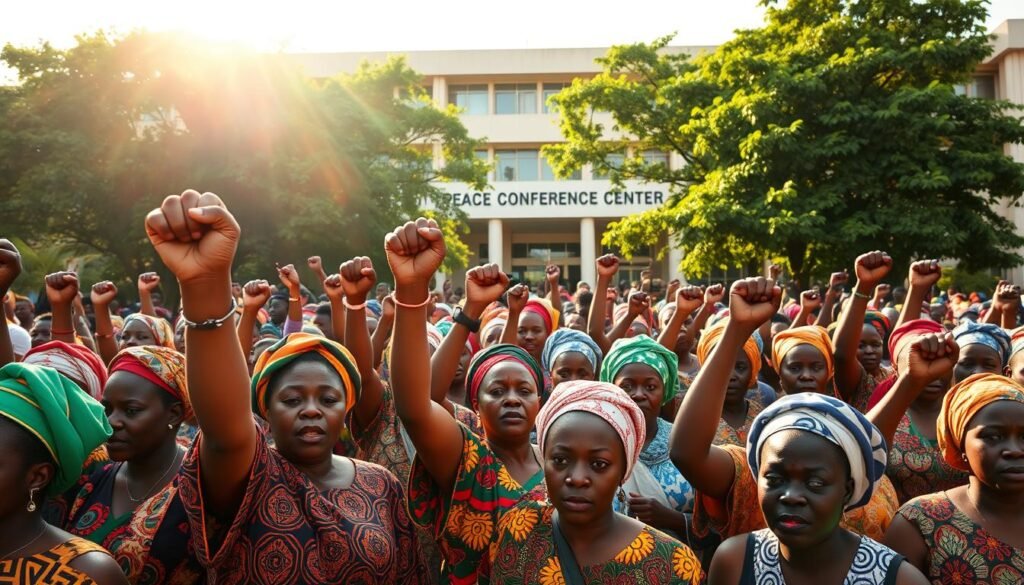
Following Warlords to Negotiations
Initial demonstrations began outside the negotiation venues. The protesters held vigil day and night.
Their presence soon moved inside the building. They staged sit-ins that disrupted the casual atmosphere.
The warlords initially treated the talks like a social event. The women changed this dynamic through persistent presence.
Human Barricade Tactics
When progress stalled, the movement employed bold tactics. They formed human barricades at all exits.
This prevented negotiators from leaving without agreement. The physical blockade created necessary pressure.
Mediator General Abubakar acknowledged their crucial role. He recognized their actions shifted negotiations toward seriousness.
The Threat to Disrobe as Turning Point
The most dramatic moment came during a critical stalemate. The activist threatened traditional curse of disrobing.
This powerful gesture leveraged cultural taboos against male negotiators. It represented ultimate shame in their tradition.
The threat broke the negotiation deadlock completely. Atmosphere changed from circuslike to somber immediately.
These actions led to the Accra Comprehensive Peace Agreement. The document was signed on August 18, 2003.
Nonviolent methods achieved what years of war could not. Global attention elevated the movement’s profile worldwide.
The successful talks concluded Liberia’s civil conflict. This paved the way for post-war rebuilding efforts.
Leymah Gbowee’s Nobel Peace Prize Achievement
Global recognition arrived in 2011 when the world’s most prestigious peace award honored her extraordinary work. The 2011 Nobel Peace Prize celebrated nonviolent achievements that changed history.
2011 Nobel Recognition with Ellen Johnson Sirleaf
The nobel peace award was shared with two remarkable women. Ellen Johnson Sirleaf and Tawakkul Karman joined her in this honor.
This marked the first time three women received the prize together. Their collective work represented different regions and approaches to peace.
The shared recognition highlighted women’s growing influence in global affairs. It showed how female leadership could transform conflict resolution.
Citation for Women’s Safety and Peacebuilding Rights
The Nobel Committee’s citation specifically praised their nonviolent struggle. It recognized their work for women rights to participate in peacebuilding.
The award emphasized the importance of peace security for all citizens. It validated women’s unique role in creating safer societies.
This recognition brought international attention to previously overlooked contributions. It changed how the world viewed women’s peacebuilding capabilities.
Global Impact of the Award
The Nobel Prize instantly amplified her global platform. Speaking engagements and international advocacy opportunities multiplied.
Documentaries like “Pray the Devil Back to Hell” gained renewed attention. Media coverage inspired women worldwide to pursue nonviolent activism.
The award particularly energized African women’s peace movements. It demonstrated that local actions could receive global recognition.
Leymah Gbowee used this platform to endorse Johnson Sirleaf in Liberia’s 2011 elections. This political support showed her continued commitment to national progress.
The Nobel Prize cemented her legacy as a transformative peace leader. It validated the strategies that ended Liberia’s civil war through women’s collective action.
Post-War Peacebuilding Work
The true test of any peace movement comes in the years following the ceasefire. Leymah Gbowee transitioned seamlessly from protest leader to reconstruction architect. Her post-war work focused on healing national wounds and preventing future conflicts.
Truth and Reconciliation Commission Role
From 2004 to 2005, she served on Liberia’s Truth and Reconciliation Commission. This body addressed war crimes and promoted national healing.
She helped document human rights abuses during the civil war. Her social work background proved invaluable for trauma-sensitive approaches.
The commission provided a platform for victims to share their stories. It created official records of Liberia’s conflict for historical preservation.
Women Peace and Security Network Africa
In 2006, she co-founded the Women Peace and Security Network Africa. This organization focused on women peace security governance across the continent.
As executive director for six years, she developed programs in Ghana and Liberia. The peace security network trained women in leadership and conflict prevention.
WIPSEN-A became a powerful platform for African women’s voices. It emphasized local solutions to regional security challenges.
International Advocacy and Speaking
Her global influence expanded through United Nations speeches and international conferences. She shared Liberian women’s peacebuilding experiences worldwide.
Leymah Gbowee criticized international agencies for cultural insensitivity in peace work. She advocated for greater local involvement in conflict resolution.
She joined the Nobel Women’s Initiative, continuing her global advocacy. Her board memberships expanded her impact on international women initiative programs.
These post-war activities laid the foundation for her future foundation work. They demonstrated her evolving approach to sustainable peacebuilding.
Gbowee Peace Foundation Africa
Building lasting peace requires investing in future generations. The Nobel laureate created a permanent institution to continue her life’s work beyond protests and peace talks.
This organization focuses on education and empowerment as tools for sustainable peace. It addresses root causes of conflict through opportunity creation.
Founding in 2012
The gbowee peace foundation launched in Monrovia in 2012. This timing followed her Nobel recognition and leveraged increased global attention.
The peace foundation africa began with a clear mission. It aimed to provide educational access and leadership development for marginalized groups.
Initial programs focused on women and youth affected by Liberia’s civil war. The foundation addressed post-war challenges like poverty and limited opportunities.
Educational Programs for Women and Youth
Scholarships became a cornerstone of the foundation’s work. They enabled bright students to pursue education despite financial barriers.
The programs specifically target young women and girls. Education provides tools for economic independence and community influence.
Partnerships with organizations like A New Dimension of Hope expanded impact. These collaborations built schools and learning centers across Liberia.
The educational approach recognizes knowledge as power. It creates informed citizens who can contribute to national development.
Leadership Development Initiatives
Training programs form another critical component of the foundation’s work. They develop leadership skills among participants.
These initiatives teach peacebuilding and community engagement techniques. Participants learn conflict resolution methods applicable in daily life.
The foundation expanded to include boys in its programs. This broadened approach recognizes that sustainable peace requires all community members.
As president gbowee peace foundation leader, she guides strategic direction. Her experience shapes programs that address real community needs.
The foundation africa represents her enduring commitment to empowerment. It continues the work started during Liberia’s peace movement through institutional means.
This organization ensures her legacy continues through concrete community improvements. It transforms activist energy into lasting social change.
Conclusion: Legacy and Continuing Impact
Her journey from trauma survivor to global peace icon continues to inspire millions worldwide. The Nobel laureate’s legacy includes her powerful memoir “Mighty Be Our Powers” and the acclaimed documentary “Pray the Devil Back to Hell.”
She remains actively engaged in global advocacy as executive director at CUNY’s Institute on Gender, Law, and Transformative peace. Her work inspires similar women-led initiatives in conflict zones across Africa and beyond.
As a mother of six, Leymah Gbowee embodies the connection between personal experience and global change. Her holistic approach demonstrates how ordinary people achieve extraordinary impact through determined nonviolent action.
Leymah Gbowee‘s enduring influence makes her a model for future generations of activists and peacebuilders. Her story proves that sustainable transformation begins with courageous individuals uniting for common purpose.
FAQ
What is Leymah Gbowee most famous for?
She is best known for leading the Women of Liberia Mass Action for Peace movement, which was instrumental in ending the Second Liberian Civil War. Her powerful nonviolent activism, documented in the film Pray the Devil Back to Hell, earned her the 2011 Nobel Peace Prize.
What was the significance of the sex strike in the peace movement?
The sex strike was a strategic, nonviolent tactic used to pressure men, including husbands and warlords, to engage in peace talks. It drew global attention to the women’s cause and demonstrated their serious commitment to ending the conflict.
Which organization did she help found to continue her work?
She established the Gbowee Peace Foundation Africa in 2012. This organization focuses on providing educational opportunities and leadership development for women and youth in West Africa, continuing her legacy of building peace from the ground up.
How did she force progress during the peace talks in Ghana?
When negotiations stalled, she and other activists formed a human barricade, trapping the warlords and delegates inside the meeting hall. She famously threatened a traditional curse of disrobing, which ultimately broke the deadlock and compelled the men to sign a peace agreement.
What is her connection to Ellen Johnson Sirleaf?
They were jointly awarded the 2011 Nobel Peace Prize for their nonviolent struggle for women’s safety and for women’s rights to full participation in peacebuilding work. Sirleaf was the president of Liberia, and Gbowee was the civil society leader who helped create the conditions for peace.
Where did she receive her formal education in peacebuilding?
She earned a Master’s degree in Conflict Transformation from Eastern Mennonite University in the United States. This formal training built upon her hands-on experience working in trauma healing and with ex-child soldiers in Liberia.



